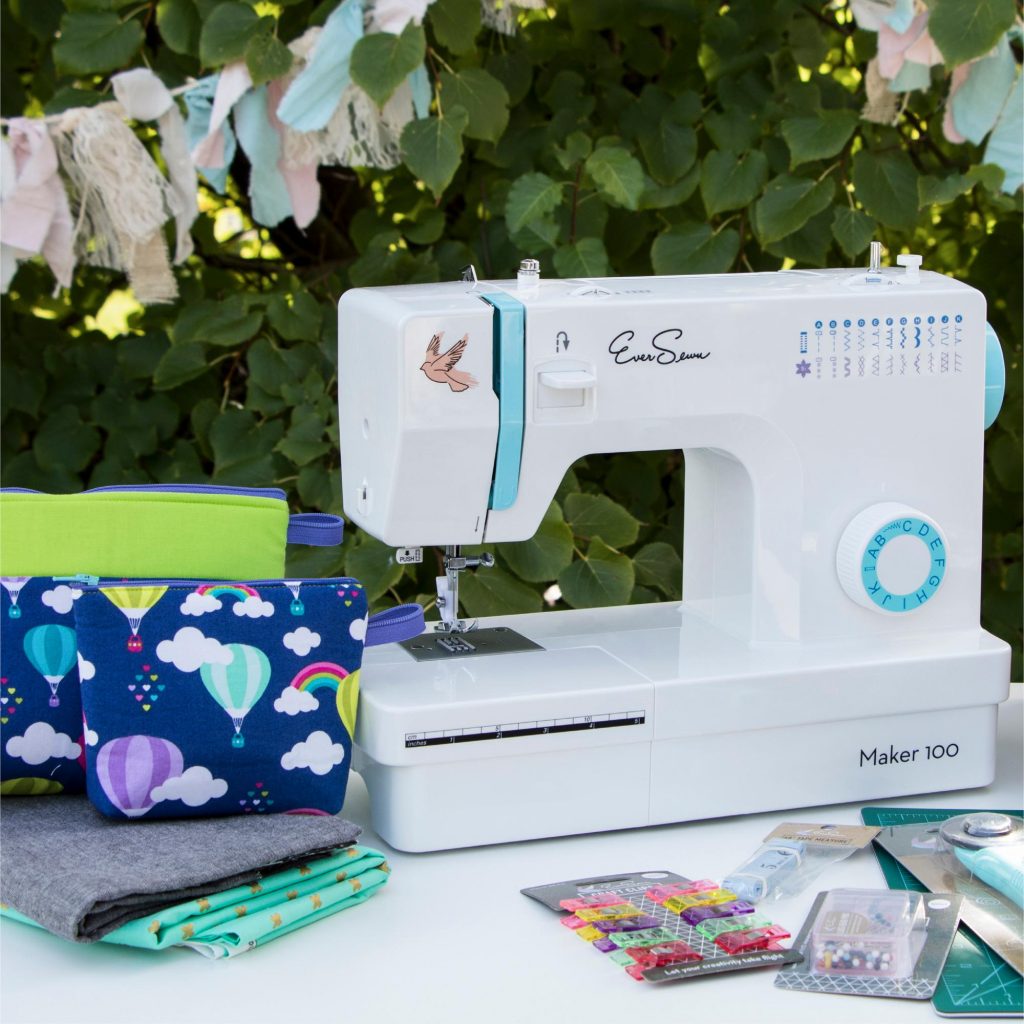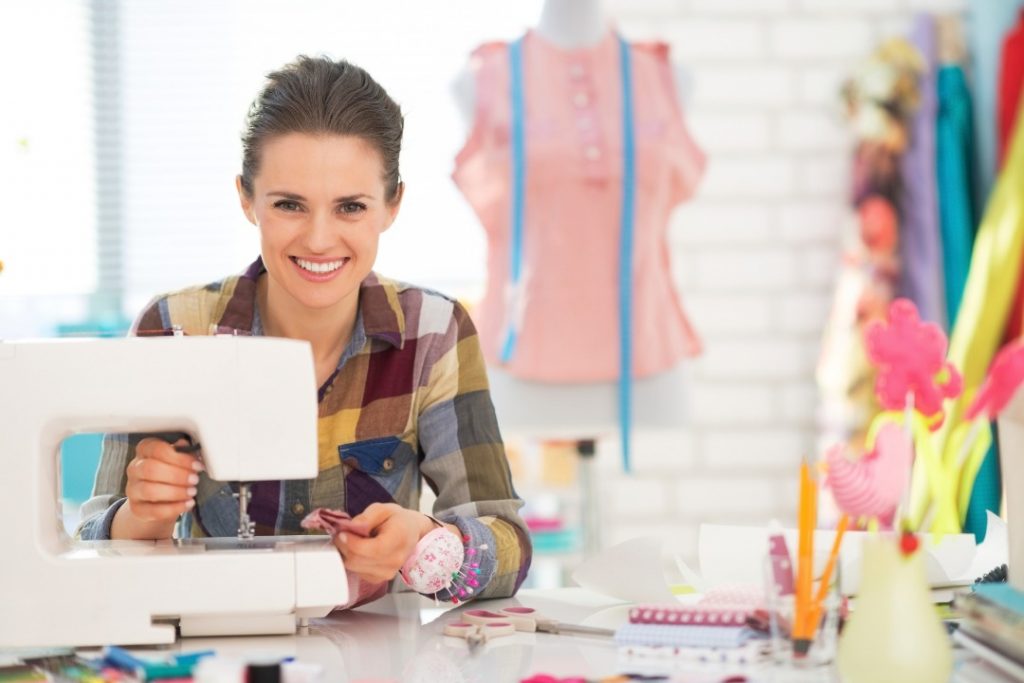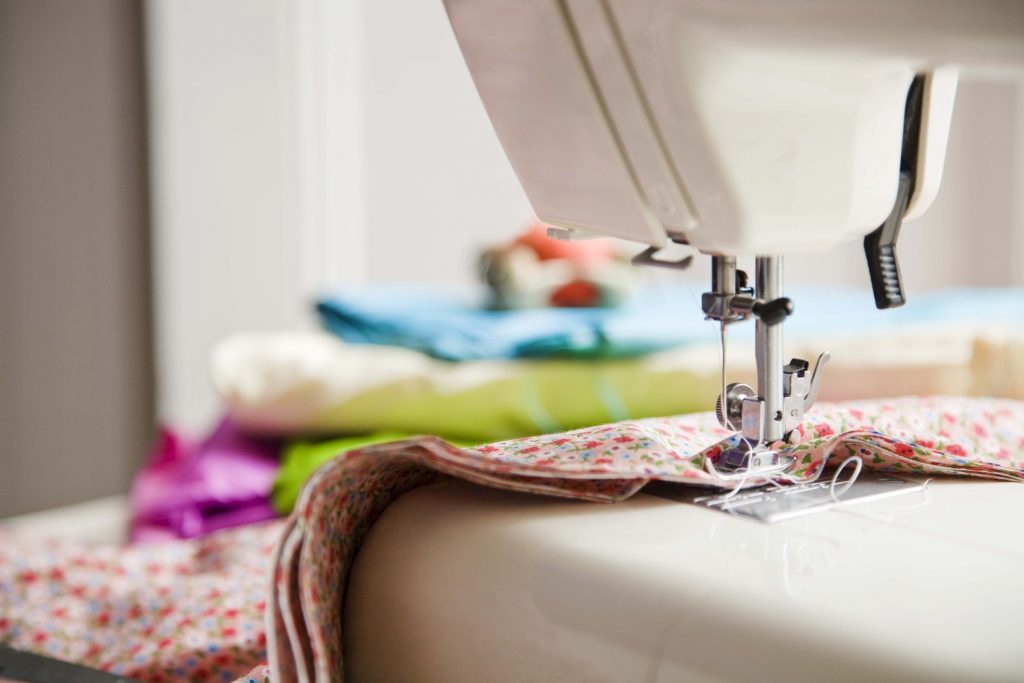

Buying a sewing machine that’s right for you will depend on your skill level and budget restriction. If you are a beginner, all you need is a basic model that can handle simple clothing or crafts projects. For more ardent seamstresses there are machines that, along with the basics, will also cater to more advanced tasks like quilting. However, if you are on a budget and looking for something without breaking the bank, then set yourself a budget limit of around $200.
Getting the best sewing machine under $200 may seem somewhat limiting in terms of features, but that doesn’t have to be the case. Our experts have rounded together some of the best models within this price range without compromising on versatility or functionality. We look closely at important factors like speed, number of stitches, machine weight, maximum stitch width and warranty information to help you find the product that will work best for you. Keeping these factors in mind, you can think about how you intend on using your machine and how many or how few features you need to get the work done.
To help you make the right decision, we have put our research together in a quick comparison table listing the best under $200 sewing machines picked out by our team. For more detail on every item listed here, look at our detailed product review for each machine, and then conclude with our all-inclusive buying guide and an FAQ section to get the best answers to your queries.
More features: one-step buttonhole, drop feed pressure adjustment, automatic needle threader
JUKI has been known to provide its customers with practical and reliable machines, both durable and easy to use. The brand is well received for its quality products that come with affordable prices. Keeping up with this tradition, this particular model is our Editor’s Choice on the list for its noteworthy performance and function, all for less than $200.
The JUKI HZL 353ZR-C is easy to set up and work with. For startup, the machine comes with an easy-to-follow manual and an instructional DVD. This machine is a flexible, well-rounded one that can work for a variety of materials and media. It comes with easy adjustment methods for the stitching length and width, as well as with a presser foot. The buttonhole option is simple – it’s automatic and gets the job done in one step. To top it off, the machine makes minimal noise while at work.
The HZL 353ZR-C also includes an automatic needle threader which saves both time and the frustration of threading the needle manually. Other features include a free arm for working on sleeves and cuffs, and a bright white LED backlight.
While customers love this product, the rare complaint has come up about missing parts upon opening.
More features: one-step auto-size buttonholes, automatic needle threader, oversized wide table included, built-in free arm
The CS6000i sewing machine is acclaimed both for its affordability and great variety of features specialized for sewing and quilting. One of its most notable features is its impressive selection of 60 different stitches including 7 varieties of one-step buttonhole styles.
To ensure everything is user-friendly and not too overwhelming (especially for beginners), the CS6000i is the only machine on this list with an LCD display to view and adjust the stitching selection electronically. The threading diagrams are easy-to-follow and labelled by the according feature. Because the product is electronic, it also has the variable speed control feature.
For larger projects, such as quilts, the machine comes with a detachable, oversized wide table.
The CS6000i also includes an automatic needle threader, an LED-lit work area, and a built-in free arm for stitching sleeves. The machine comes with a hard carry case for portability.
The only recurring concern among customers is the thread tension being low with certain materials. This popular model from Brother has been specially designed for larger projects, and its wide features along with affordability are why we nominate it the best sewing machine for quilting under $200.
More features: built-in needle threader, one-step buttonholes, adjustable presser foot pressure, built-in free arm, built-in reverse lever
The Heavy Duty 4432 sewing machine from Singer has been produced with heavier materials in mind. Heavy duty projects require a stronger machine, and if you’re looking for one on a budget, this is our best choice for a heavy-duty sewing machine under $200.
This model sports a strong motor capable of withstanding an impressive maximum speed of 1100 stitches per minute. There is also a built-in reverse lever to further strengthen stitches. This machine is made with a metal frame for added durability and support, which is useful for both heavy-duty projects as well as for frequent ones. Despite its metal structure, this model weighs less than 15 pounds.
The machine features 32 stitches including a one-step buttonhole, and a presser foot with adjustable pressure so it can work with materials both thick and thin with ease.
The Heavy Duty 4432 also includes an automatic needle threader and a built-in free arm. Singer also has an app with sewing lessons and tutorials for their products. It is often referred to be a great sewing machine for leather.
Due to the high maximum speed of stitching, this machine does run a higher risk of breaking the needle when used.
More features: 10 Janome bobbins, size 14 needles, built-in free arm, 5-piece feed dog, four-step buttonhole
The Janome 2212 is a great model for those who want to start sewing, and this particular deal is a great starter pack for entry-level sewers. This machine includes a bonus bundle with 10 bobbins and a set of size 14 needles to get you started.
This machine is very simple and keeps all its options at a minimum. It provides the basics including 12 different built-in stitches, a dial to select a pattern, and a four-step button hole. You can adjust the length of a straight stitch or the width of a zig-zag stitch to make the machine easier to use with different materials. The 5-piece feed dog can be dropped for preference or different kinds of sewing. The machine also comes built-in with a free arm for sleeves and cuffs.
Customers have said that the machine tends to be fairly loud when at work, and have noticed that the bobbin can be difficult to remove and insert.
Overall, the Janome 2212 is an effective machine for getting started as it gets the job done without the overwhelming, elaborate options of other sewing machines. These reasons are why this model from Janome is the best sewing machine for beginners under $200.
More features: manual thread cutter, automatic needle threader, reverse lever, automatic bobbin winder, adjustable presser foot pressure
EverSewn’s Sparrow 15 sewing machine comes with a good number of features for its price, and is very good with basic projects. No matter what your level, this machine is great for lightweight projects and patching or stitching up clothes.
To keep everything simple and not too sophisticated, the machine is entirely mechanical – none of those technical difficulties that come with electronic machines. This little mechanical machine comes with both an automatic needle threader and bobbin threader, a reverse lever, and a manual thread cutter.
Featuring 32 stitches on a dial selection, the Sparrow 15 includes adjustable stitch lengths and a simple one-step buttonhole that can reach a maximum stitch width of 5 mm. This model comes with standard four presser feet, and the presser foot pressure can be adjusted.
This model is well-made for the price and is lightweight at only 13lbs.
However, this sewing machine is not recommended for heavy-duty or complicated projects because of how lightweight it is and the simple features it offers.
Overall, we nominate the Sparrow 15 our Budget Pick as it works great for light work, travel, or as a backup machine all for a great price.
When buying a sewing machine on a budget, it’s always best to consider what you believe is mandatory in your machine and differentiate from what isn’t necessary for you to work. A budget of 200$ is going to get you a sturdy reliable sewing machine, not too heavy on the computerized features but stable enough to pull off a professional performance.
You can purchase a beginners sewing machine in close to $100. A professional-grade, fully functioning computerized sewing machine can cost you a thousand dollars and more. So when you’re looking for a sewing machine lying under $200, you’re looking at a strong-standing sewing machine, most likely electronic in design and lower on the scale of accessories.
 A mechanical machine is the most basic model out there. Mechanical machines are manually powered with things like dials and manual threading. Mechanical machines also work best when they’re not being used for heavy duty jobs, just small jobs or lightweight projects.
A mechanical machine is the most basic model out there. Mechanical machines are manually powered with things like dials and manual threading. Mechanical machines also work best when they’re not being used for heavy duty jobs, just small jobs or lightweight projects.
An electronic machine is one with a pinch of computerized technology, but isn’t as fancy as a computerized model. Electronic machines can have push buttons, a digital display screen, pre-installed selections for instance applicable stitch patterns, automated threading, built-in motors and more.
Computerized machines are the most independent and intricate of the three, and not commonly found in this budget. These machines only need you to insert the details about the stitch pattern and monitor its management. Then, they do all of the work by themselves to present the neatest, quality work even if you’re not that good yourself at sewing.
What you’ll be aiming for with $200 in hand is a decent electronic sewing machine to really get your money’s worth. These machines are adaptable for both beginners and experienced sewers.
The first thing you can do to keep your machine safe from excess dust is by covering it properly. You can keep the box of the machine for this, or simply tuck it in under a plastic sheet. Some models such as the Brother CS6000i come with a hard carrycase for safekeeping.
When cleaning the machine, make sure it’s unplugged and not warm before handling. Take a damp cloth and rub over the body to get rid of all the dust and grime. When it comes to nooks, crannies and corners, squeeze a lighter cloth into these places so as not to damage or scratch them. Also, remove any detachable items from the machine, cleaning those individually before placing them back on.
After continuous use, you may find tangles developing in the threads or lint sticking out of places on the machine. A tweezer is the best instrument to pick these out safely without tugging directly at the machine.
To make sure your machine remains in quality condition, take your machine for tuning every two years.
 The perfect machine for you is going to rely heavily on your preferences. What may be mandatory for a beginner may not be as important to an experienced sewer. However, the following are some important considerations for all levels:
The perfect machine for you is going to rely heavily on your preferences. What may be mandatory for a beginner may not be as important to an experienced sewer. However, the following are some important considerations for all levels:
You may purchase a smaller model only find out later that it’s relatively heavy for its size. Or, you may purchase a large model to commit to some heavy duty projects and then find it’s too lightweight to be properly built for the job.
Think about your commitment to the machine, what projects you’re planning on doing and how often you’ll be using it.
If you’re looking at limited use and nothing too intense, look for a small, lightweight machine that you can easily store away such as the Brother or Janome models featured here. For longer, more determined users looking for an almost every day use, try something a little sturdier with a more robust and strong build such as the Singer 4432.
Most electronic and some mechanical machines come with a variety of built-in stitches to make your works more personalized and unique. However, built-in stitches aren’t always considered important to users. They are a neat addition to your machine but sometimes, factors being automated and computerized to lessen the load of sewing are what some people are looking out for. It’s a matter of prioritizing.
You’ll find some machines with a dial as their primary source of control, others with push buttons and even some that offer their controls on a touchscreen. The more advanced the controls become, the higher the price will spike.
When it comes to controls, it’s a matter of understanding what you work best with. There should also be enough space on the sewing machine so that you can work easily with and on it. If all the fancy controls take up your space, it may not be a machine worth investing in.
 Sewing machines need to have a consistent tempo when they’re in action otherwise you’ll end up with sloppy work.
Sewing machines need to have a consistent tempo when they’re in action otherwise you’ll end up with sloppy work.
Most sewing machines provide you with a foot pedal to control the speed of your machine. This is the most basic control and is quite easy to use once you’ve got a steady flow. Another method is the speed bar installed on the side of the machine. This method holds the speed of the machine more consistently than your foot may. One issue with this method though is that you have to stop your work, change that speed bar and then continue your work at the new speed. With a foot pedal, you can work and change the speed without interruption.
Sewing machines come with a bobbin winding system for smooth winding that keeps the lower thread help secure your stitches. Most models will provide bobbins with the machine, but if you need extras, these are available separately.
Selling points for most machines will always be their automatic options since these make your sewing experience easier. Some common options include automatic threading, automatic thread cutters, automatic needle positioner and LED lighting.
Automatic speed control, threading and thread cutting options are easier options to find than per say, an automatic needle positioner. Not everything can fit into the budget of $200 and if you do find something that seems to promise more than it can offer, do try out all the features beforehand to make sure everything works as advertised.
 Some machines come with multiple feet options to diversify your sewing experience, while others come with one generic foot to work for everything. Feet are also available separately but selecting feet can become overwhelming. So first stick to the basics like the basic foot, a zig zag foot, a buttonhole foot and an adjustable foot for stronger fabrics and threads. With these in hand, you can determine whether or not you need more and for what exact purpose.
Some machines come with multiple feet options to diversify your sewing experience, while others come with one generic foot to work for everything. Feet are also available separately but selecting feet can become overwhelming. So first stick to the basics like the basic foot, a zig zag foot, a buttonhole foot and an adjustable foot for stronger fabrics and threads. With these in hand, you can determine whether or not you need more and for what exact purpose.
Some accessories you’ll encounter are extra table space, lighting, compartment space and organizers. While these are all handy, bear in mind that the more accessories you prioritize, the higher the price will become. You can save some spending from a sewing machine to get a fabric cutting machine for more compliacated projects handling.
So long as the machine can perform perfectly fine without a specific aspect, it’s an accessory.
Warranties are the perfect last resort, but some come with conditions that may prevent you from returning or getting your money back. Always check your options and limitations with the warranty, and try your best to get trial periods with your machine. With a trial period, you can test all aspects of the machine and determine whether or not the machine is one worth keeping.
The Juki HZL-353ZR-C is a clear winner in the best sewing machine under $200 category as it includes all the basics along with some extras and yields great value for your money. You get the complete package with a combination of functionality and aesthetics with this machine.
The Brother CS6000i also wins accolades as one of the best sewing machines under $200 that offers a fair bit of versatility, performance and durability, all without the price tag of a high end machine. It takes care of all your quilting needs along with larger projects in general.
And if all you’re looking for is a basic machine to get started without having to spend too much, then take a look at the Eversewn Sparrow 15 nominated as our budget pick. This is a machine that will cover the basics well without burning a hole in your wallet.
Hope you’ve found the perfect sewing machine for your budget, but if these models were not enough, we have list for the best sewing machine under 300 and sewing machine under 100 dollars.